Match the compounds given in column I with the effects given in Column II
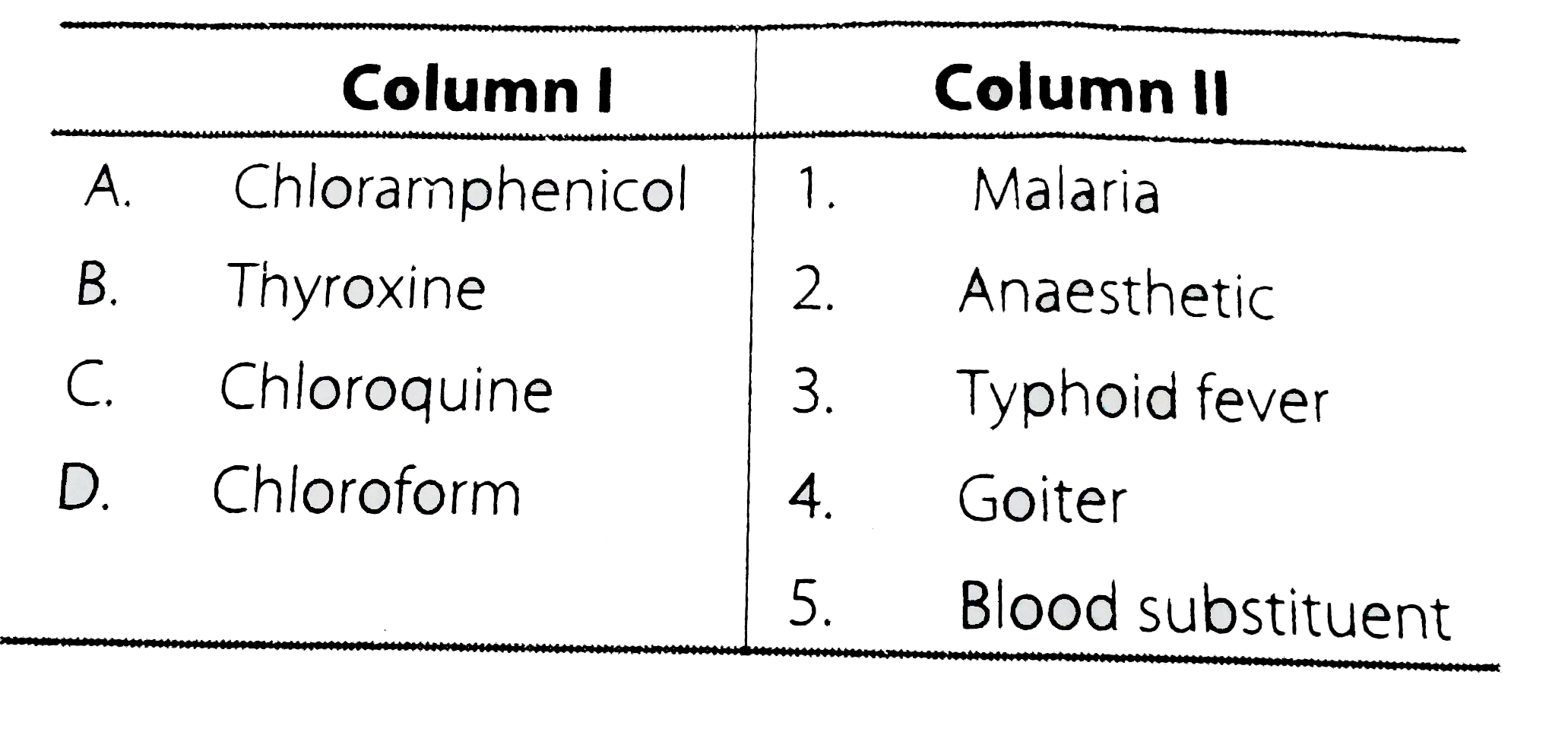
A→(3) B→(4) C→(1) D→(2)
A. Chloramphenicol is a broadspectrum antibiotic. It is used in the treatment of typhoid fever.
B. Thyroxine is a hormone secreated by thyroid gland. execessiv secretion of thyraxine in the body is known as hyperthyroidism. Most patient with hyper thyroidism have an enlarged thyroid gland i.e, goitre.
C. Chloroquine prevents the development of malaria parasite plasmodium vivax in the blood
D. IUPAC name of chloroform is trichloromethane with formula CHCI3, It is a colourless volatile, sweet-smelling liquid. Its vapours depresses the central nervous system and used as an anaesthetic.
Topper's Solved these Questions
- HALOALKANES AND HALOARENESBOOK - NCERT EXEMPLAR ENGLISHCHAPTER - HALOALKANES AND HALOARENESEXERCISE - Assertion & Reason
10 Videos
- HALOALKANES AND HALOARENESBOOK - NCERT EXEMPLAR ENGLISHCHAPTER - HALOALKANES AND HALOARENESEXERCISE - Long Answer Type Questions
3 Videos
- HALOALKANES AND HALOARENESBOOK - NCERT EXEMPLAR ENGLISHCHAPTER - HALOALKANES AND HALOARENESEXERCISE - Short Answer Type Questions
35 Videos
- GENERAL PRINCIPLE AND PROCESSES OF ISOLATION OF ELEMENTS BOOK - NCERT EXEMPLAR ENGLISHCHAPTER - GENERAL PRINCIPLE AND PROCESSES OF ISOLATION OF ELEMENTS EXERCISE - Long Answer Type Questions
1 Videos
- P-BLOCK ELEMENTSBOOK - NCERT EXEMPLAR ENGLISHCHAPTER - P-BLOCK ELEMENTSEXERCISE - Long Answer Type Questions
3 Videos
Similar Questions
Match the pollutants given in Column I with their effects given in Column II.

View SolutionMatch the compounds given in Column-I with the items given in Column - II.

View SolutionMatch the compounds given in column I with the IUPAC names given in column II and mark the appropriate choice.
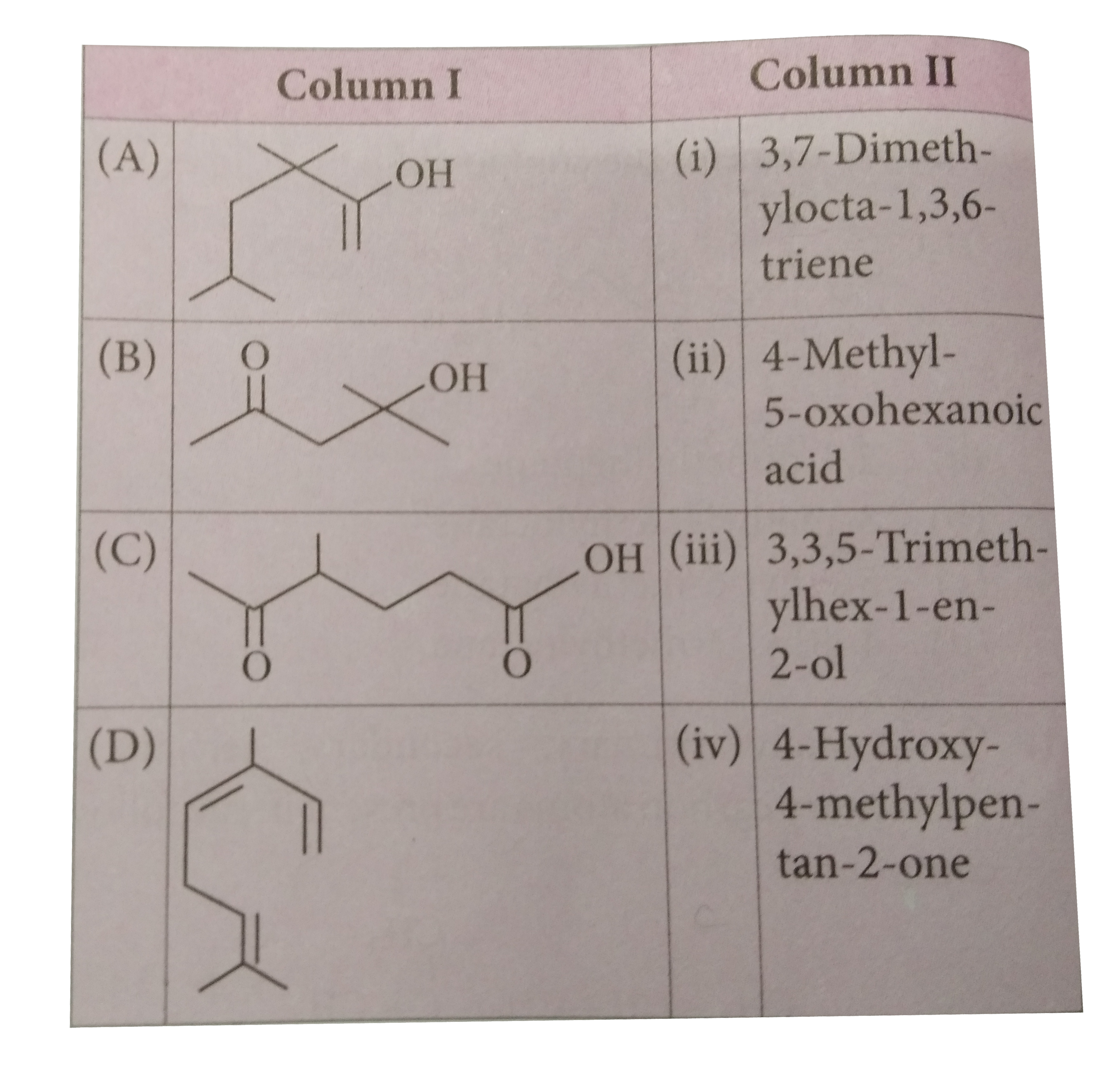
View SolutionMatch the reactions given in Column I with the names given in Column II.
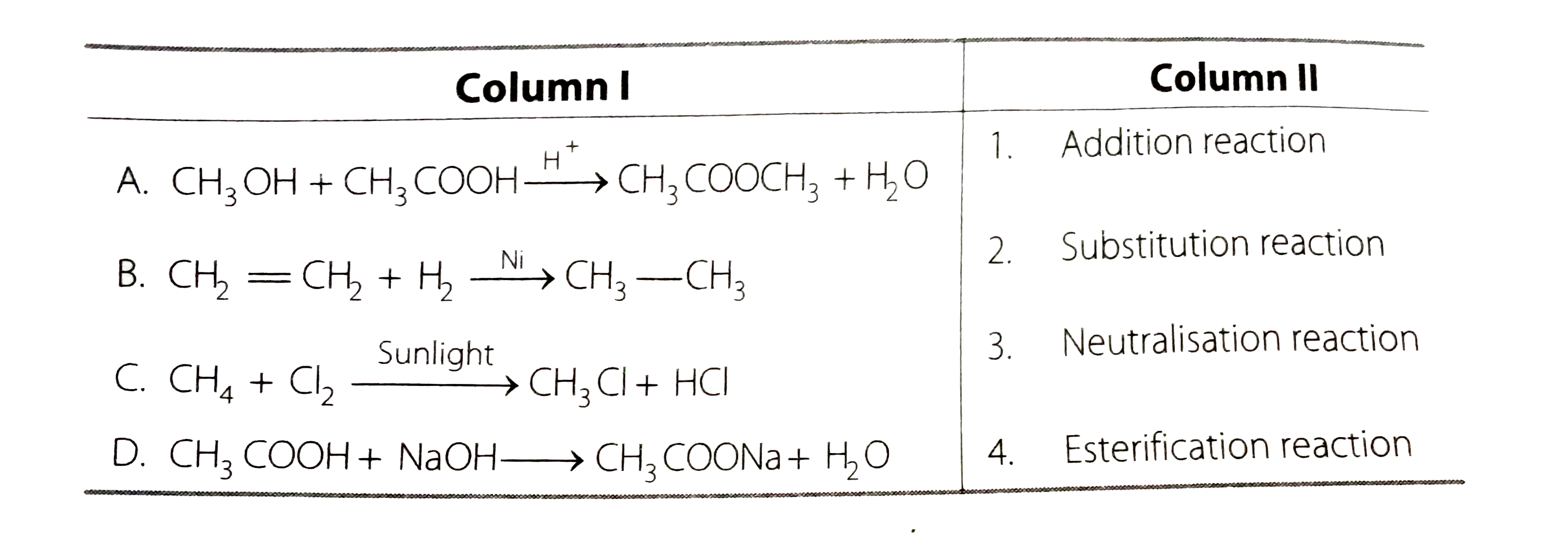
View SolutionMatch the properties given in Column I with the metals given in Column II
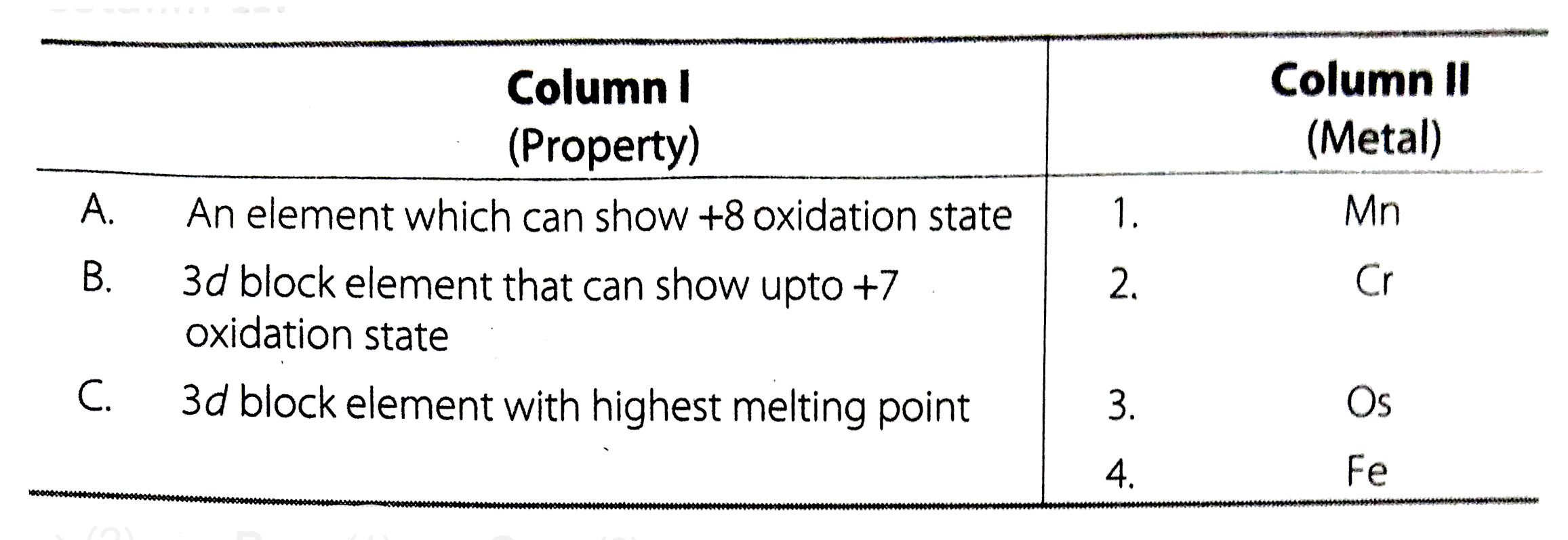
View SolutionMatch the complex ions given in column I with the colours given in column II and assign the correct code.

View SolutionMatch the compounds/elements given in Column I with uses given in Column II.
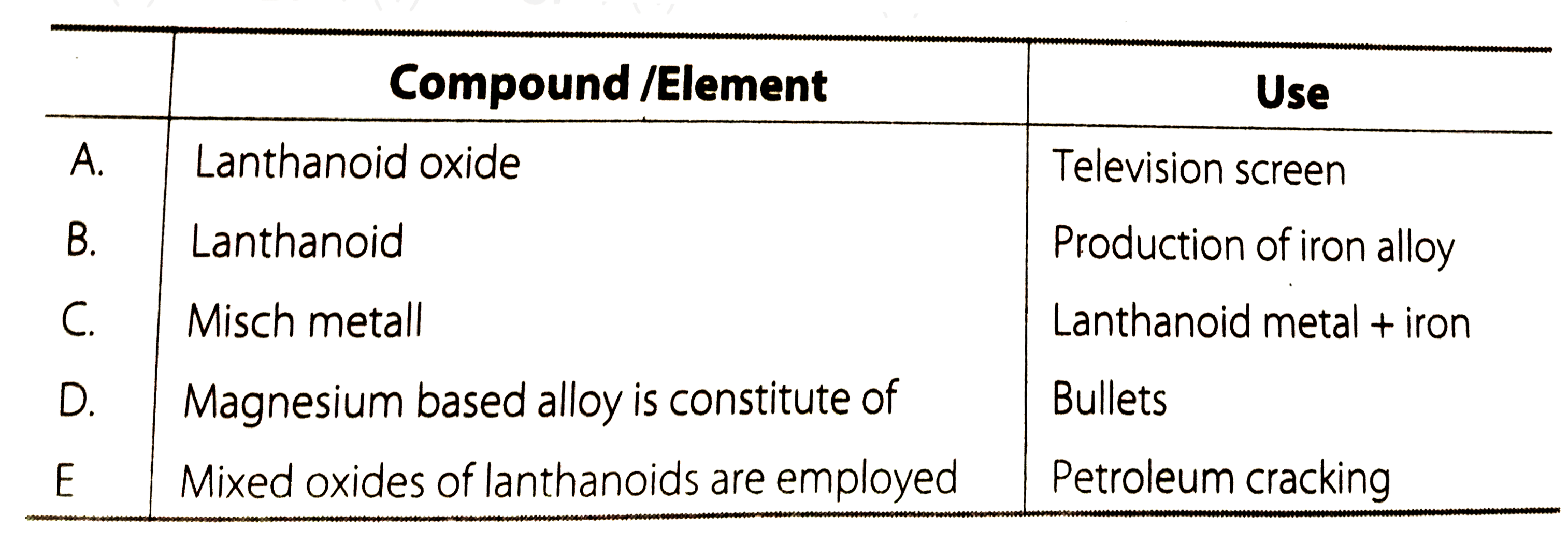
View SolutionMatch the property given in Column I with the element given in Column II.
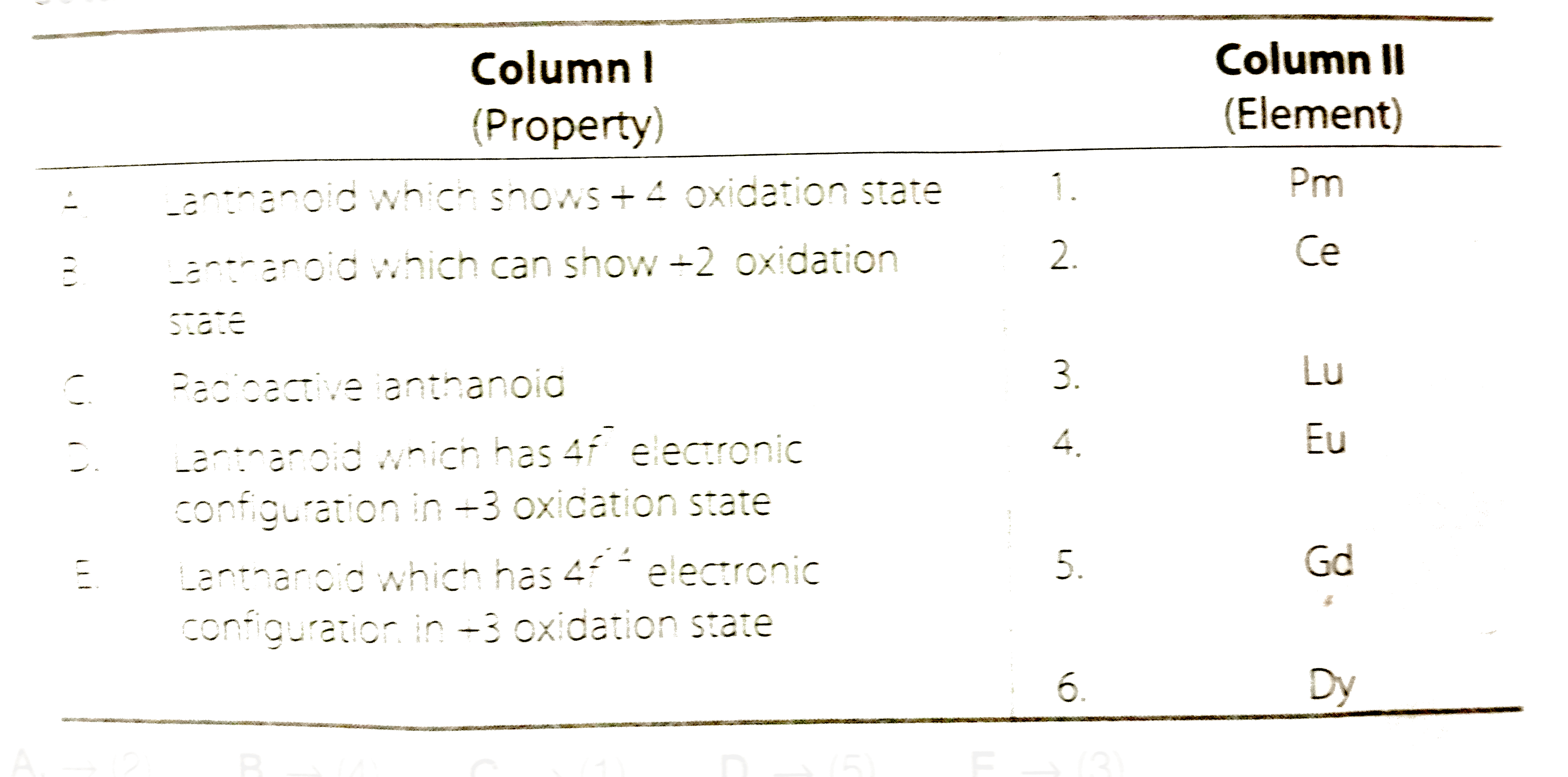
View SolutionMatch the reactions given in Column I with the statements given in Column II

View SolutionMatch the reactions given in Column I with the statements given in Column II

View Solution
